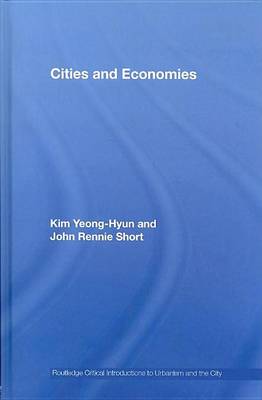Routledge Critical Introductions to Urbanism and the City
2 total works
Cities and Economies explores the complex and subtle connections between cities and economies. The rise of the merchant city, the development of the industrial city and the creation of the service-dominated urban economy are all explored, along with economic globalization and its effects on cities in both developed and developing economies. This book provides a thorough examination of the role of the city in shaping economic processes and explains the different effects that economies have on cities. It provides an invaluable and unrivaled guide to the relationship between urban structure and economic processes as they compare and contrast across the world.
The authors examine the complex relationships between the city and the economy in historical and global contexts, as well as evaluating the role of world cities, the economic impacts of megacities and the role of the state in shaping urban economic policies. They focus on the ways in which cities have led, and at the same time adapted to, economic shifts. Large cities are viewed as the centres of regional and national economies, while a small number are defined by their centrality in the global economy.
The book:
- examines key ideas and concepts on the economic aspects of urban change
- explores the changing nature of urban economies and their relationships with changes at the national and global levels
- compares current economic issues and policies of large cities around the world
- explores the links between globalization and economic changes in cities and the growing competitions between them.
Cities and Economies uses case studies, photographs and maps expanding across the US, Western Europe and Asia. Written in a clear and accessible style, the book answers some fundamental questions about the economic role of cities. It is an essential text for students of geography, economics, sociology, urban studies and urban planning.
Cities and Nature illustrates how the city is part of the environment, and how it is subject to environmental constraints and opportunities. The city has been treated in geographical writings as only a social phenomena, and at the same time, environmental scientists have tended to ignore the urban. This book reconnects the science and social science through the examination of the urban. It critiques the dominant academic discourse which ignores the environmental base of urban life and living, and discusses the urban natural environment and how this is subjected to social influences.
The book is organized around three central themes:
- urban environment in historical context
- issues in urban-nature relations
- realigning urban-nature relations.
Ideas such as pollution as a physical environmental fact, often created or impacted by economic, cultural and political changes are discussed, as well as viewing pollution as a social act: consuming patterns of everyday activities - driving, showering, shopping, eating - and how this has an environmental impact. The authors reintroduce a social science perspective in examining urban nature, the city and its physical environment.
Cities and Nature clearly illustrates the physical and social elements of the urban environment and shows how these are important to examining the city. It includes further reading and boxed case studies on Bangladesh, Paris, Delhi, Rome, Cubatao, Thailand, Los Angeles, Chicago, New Orleans and Toronto. This book would be an asset to students and researchers in environmental studies, urban studies and planning.

